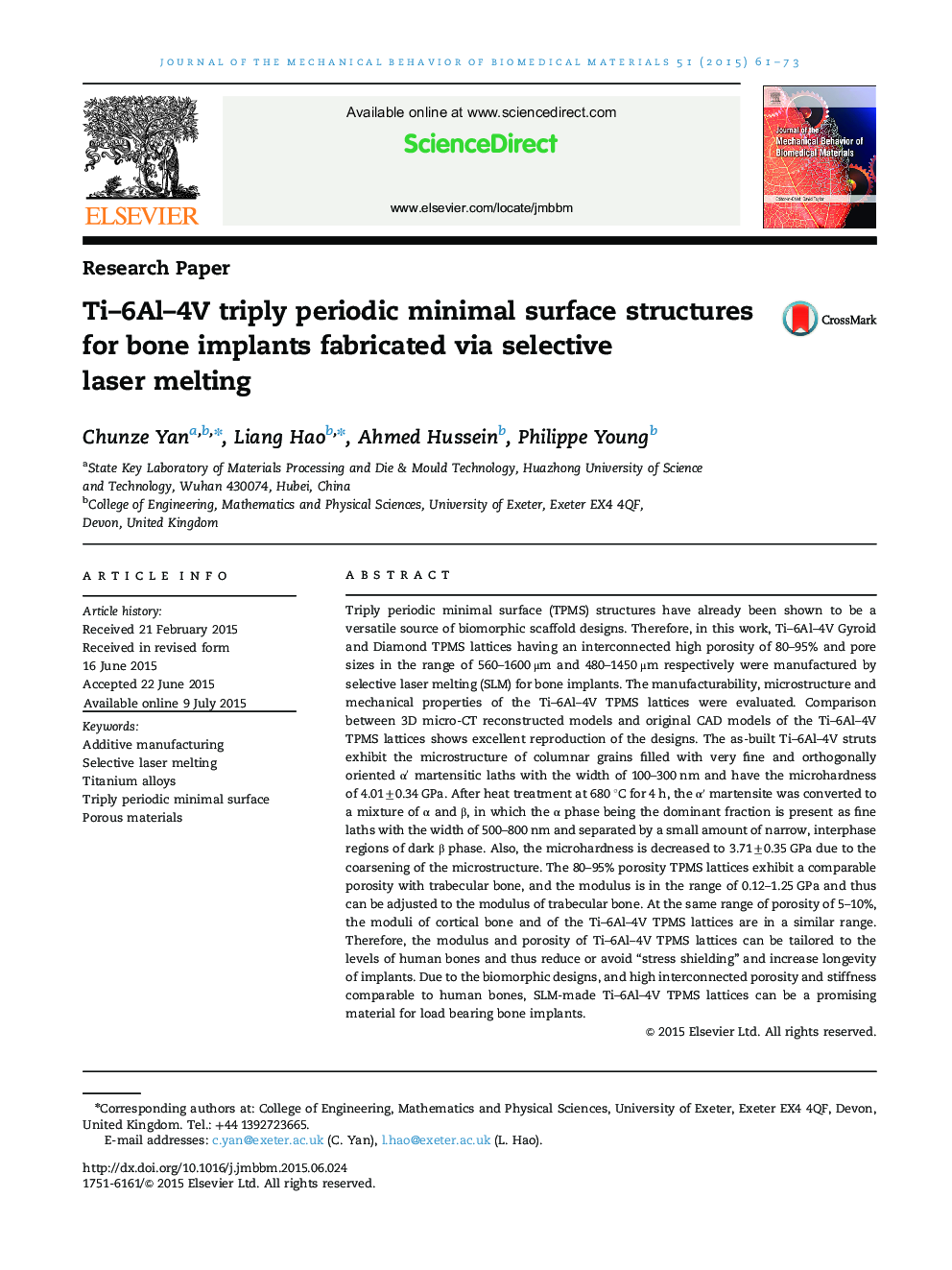| Article ID | Journal | Published Year | Pages | File Type |
|---|---|---|---|---|
| 810546 | Journal of the Mechanical Behavior of Biomedical Materials | 2015 | 13 Pages |
•Ti–6Al–4V triply periodic minimal surface lattices are made by selective laser melting.•Characterization of the lattices shows excellent reproduction of the designs.•Modulus and porosity of the lattices can be tailored to the levels of human bones.
Triply periodic minimal surface (TPMS) structures have already been shown to be a versatile source of biomorphic scaffold designs. Therefore, in this work, Ti–6Al–4V Gyroid and Diamond TPMS lattices having an interconnected high porosity of 80–95% and pore sizes in the range of 560–1600 μm and 480–1450 μm respectively were manufactured by selective laser melting (SLM) for bone implants. The manufacturability, microstructure and mechanical properties of the Ti–6Al–4V TPMS lattices were evaluated. Comparison between 3D micro-CT reconstructed models and original CAD models of the Ti–6Al–4V TPMS lattices shows excellent reproduction of the designs. The as-built Ti–6Al–4V struts exhibit the microstructure of columnar grains filled with very fine and orthogonally oriented α′ martensitic laths with the width of 100–300 nm and have the microhardness of 4.01±0.34 GPa. After heat treatment at 680 °C for 4 h, the α′ martensite was converted to a mixture of α and β, in which the α phase being the dominant fraction is present as fine laths with the width of 500–800 nm and separated by a small amount of narrow, interphase regions of dark β phase. Also, the microhardness is decreased to 3.71±0.35 GPa due to the coarsening of the microstructure. The 80–95% porosity TPMS lattices exhibit a comparable porosity with trabecular bone, and the modulus is in the range of 0.12–1.25 GPa and thus can be adjusted to the modulus of trabecular bone. At the same range of porosity of 5–10%, the moduli of cortical bone and of the Ti–6Al–4V TPMS lattices are in a similar range. Therefore, the modulus and porosity of Ti–6Al–4V TPMS lattices can be tailored to the levels of human bones and thus reduce or avoid “stress shielding” and increase longevity of implants. Due to the biomorphic designs, and high interconnected porosity and stiffness comparable to human bones, SLM-made Ti–6Al–4V TPMS lattices can be a promising material for load bearing bone implants.
